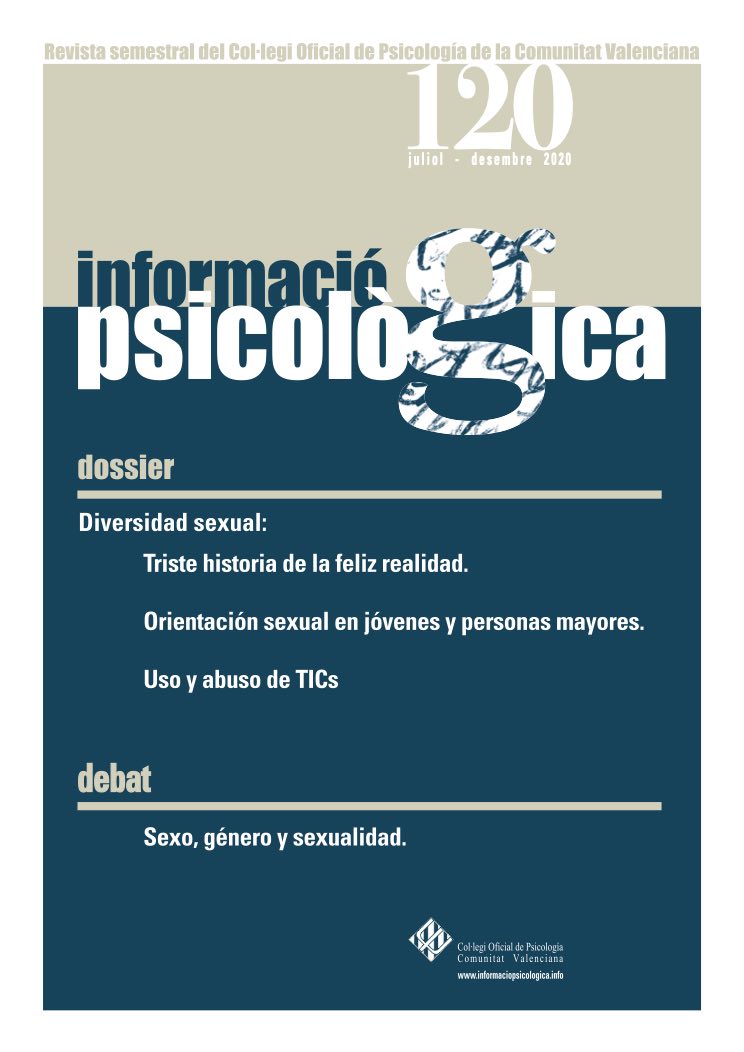Atracción, deseos y conductas sexuales: Evidencias de la diversidad en la orientación sexual de jóvenes españoles
DOI:
https://doi.org/10.14635/IPSIC.2020.120.1Palabras clave:
diversidad sexual, orientación sexual, jóvenes, diferencias de género.Resumen
Introducción. La orientación sexual ha sido una de las dimensiones sexuales que más se ha intentado normativizar, invisibilizando las realidades que se alejaban de la heterosexualidad. Por eso, este estudio pretende profundizar en las experiencias sexuales con el mismo sexo y el opuesto en mujeres y hombres jóvenes. Método. 500 mujeres y 500 hombres españoles, de entre 18 y 25 años, respondieron un cuestionario ad hoc sobre diversidad sexual. La edad media de la muestra fue de 21.23 años (DT=1.99). Resultados. Un 26.1% de los participantes se identificaba con una orientación diferente a la heterosexual, siendo el 12.8 bisexuales y el 10.8% homosexuales. En general, las mujeres refieren sentir mayor atracción sexual por ambos sexos, así como mayores prevalencias de conductas sexuales y mayor disposición a realizarlas con ambos sexos. Conclusión. La sexualidad es más compleja de lo que se estimaba tradicionalmente, observándose gran diversidad de comportamientos, independientemente incluso de la orientación sexual autoadscrita. Estos resultados podrían ser útiles, en terapia, para trabajar la autoaceptación y normalizar la propia diversidad y, como prevención, para educar en la tolerancia y el respeto, reducir el estigma del colectivo LGTBI y flexibilizar en la población general algunas ideas asumidas sobre la sexualidad.
Descargas
Descargas
Publicado
Cómo citar
Número
Sección
Licencia
Nota de Copyright-Los autores que publican en esta revista están de acuerdo con los siguientes términos:
Los autores conservan los derechos de autor y garantizan a la revista el derecho de ser la primera publicación del trabajo al igual que licenciado bajo una Creative Commons Attribution License que permite a otros compartir el trabajo con un reconocimiento de la autoría del trabajo y la publicación inicial en esta revista.
Los autores pueden establecer por separado acuerdos adicionales para la distribución no exclusiva de la versión de la obra publicada en la revista (por ejemplo, situarlo en un repositorio institucional o publicarlo en un libro), con un reconocimiento de su publicación inicial en esta revista.
Se permite y se anima a los autores a difundir sus trabajos electrónicamente (por ejemplo, en repositorios institucionales o en su propio sitio web) antes y durante el proceso de envío, ya que puede dar lugar a intercambios productivos, así como a una citación más temprana y mayor de los trabajos publicados







